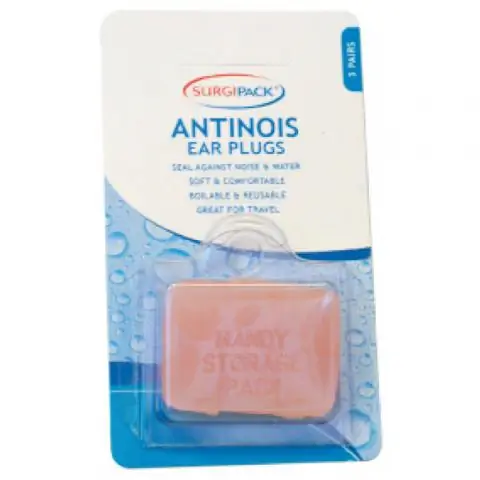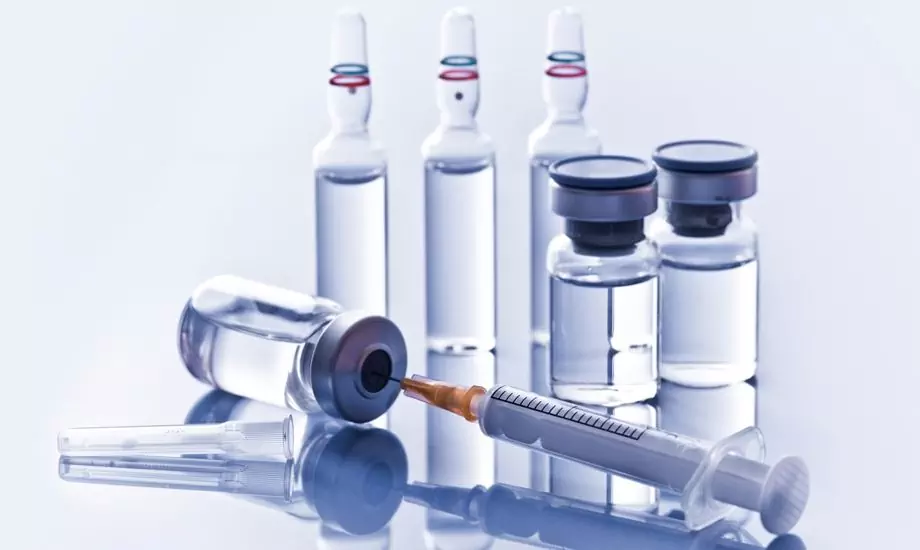- Author Rachel Wainwright [email protected].
- Public 2023-12-15 07:39.
- Last modified 2025-11-02 20:14.
Morphine
Instructions for use:
- 1. Release form and composition
- 2. Indications for use
- 3. Contraindications
- 4. Method of application and dosage
- 5. Side effects
- 6. Special instructions
- 7. Drug interactions
- 8. Analogs
- 9. Terms and conditions of storage
- 10. Terms of dispensing from pharmacies
Prices in online pharmacies:
from 55 rubles.
Buy
Morphine is a narcotic drug with an analgesic effect.
Release form and composition
Morphine is produced in the form of a solution for subcutaneous administration of 10 mg / ml: transparent, colorless or yellowish (in 1 ml syringe tubes, 20, 50 or 100 syringes in a cardboard box).
The composition of 1 ml of solution includes:
- Active substance: morphine hydrochloride - 8.56 mg (in terms of anhydrous substance);
- Auxiliary components: edetate disodium (disodium salt of ethylenediaminetetraacetic acid), hydrochloric acid solution 0.1 M, glycerol (distilled glycerin), water for injection.
Indications for use
Morphine is prescribed as an anesthetic for severe pain syndrome that has arisen for various reasons:
- Injuries;
- Severe attacks of angina pectoris;
- Myocardial infarction;
- Preoperative, operational and postoperative period;
- Pain in malignant tumors;
- Other conditions accompanied by severe pain.
Contraindications
Absolute:
- Conditions accompanied by severe depression of the central nervous system or respiratory depression;
- Paralytic intestinal obstruction;
- Convulsive states;
- Increased intracranial pressure;
- Head trauma;
- Alcoholic psychosis and acute alcoholic conditions;
- Bronchial asthma;
- Cardiac arrhythmias;
- Heart failure caused by chronic lung disease;
- Conditions after surgical interventions on the biliary tract;
- Acute surgical diseases of the abdominal organs (before diagnosis);
- Simultaneous use with monoamine oxidase inhibitors, as well as for 14 days after their cancellation;
- Hypersensitivity to drug components.
Relative (Morphine should be used with caution in the presence of the following diseases / conditions):
- Chronic obstructive pulmonary disease;
- Drug dependence (including a history);
- Suicidal tendencies;
- Alcoholism;
- Cholelithiasis;
- Emotional lability;
- Strictures of the urethra;
- Epileptic syndrome;
- Surgical interventions on the gastrointestinal tract, urinary system;
- Renal or hepatic impairment;
- Hypothyroidism;
- Hyperplasia of the prostate;
- Severe inflammatory bowel disease;
- General grave condition of the patient;
- Elderly and childhood.
Nursing and pregnant women, as well as during childbirth, Morphine can be used only for health reasons (due to the likelihood of drug dependence in the fetus and newborn).
Method of administration and dosage
Morphine should be administered subcutaneously.
The analgesic effect develops 10-15 minutes after administration, after 1-2 hours it reaches a maximum and lasts for 8-12 or more hours.
The doctor selects the dose of the drug individually based on the patient's condition and his age:
- Adults: the standard dose is 1 ml of solution (10 mg / ml). The maximum doses are: single - 20 mg, daily - 50 mg;
- Children from 2 years old: single dose - 0.1-0.2 mg / kg; the drug can be administered every 4-6 hours, the total dose is not more than 1.5 mg / kg;
- Children under 2 years of age: single dose - 0.1-0.2 mg / kg; the drug can be administered every 4-6 hours, the total dose is not more than 15 mg.
Side effects
- Cardiovascular system: more often - tachycardia, lowering blood pressure; less often - bradycardia; with an unknown frequency - increased blood pressure;
- Digestive system: more often - vomiting and nausea (usually at the beginning of therapy), constipation; less often - stomach cramps, anorexia, dry mouth, spasm of the biliary tract, gastralgia, cholestasis (in the main bile duct); rarely - hepatotoxicity (manifested in the form of dark urine, pale stools, icterus of the skin and sclera), in severe inflammatory bowel diseases - paralytic intestinal obstruction, intestinal atony, toxic megacolon (manifested in the form of constipation, flatulence, nausea, stomach cramps, vomiting);
- Nervous system: more often - fainting, dizziness, drowsiness, general weakness, unusual fatigue; less often - tremor, headache, depression, discoordination of muscle movements, involuntary muscle twitching, nervousness, paresthesia, confusion (manifested in the form of hallucinations, depersonalization), insomnia, increased intracranial pressure with the likelihood of further disturbance of cerebral circulation; rarely - depression of the central nervous system, restless sleep, with the use of large doses - muscle rigidity (especially respiratory), in children - anxiety, paradoxical excitement; with an unknown frequency - nightmares, convulsions, stimulating or sedative effect (especially in elderly patients), delirium, decreased ability to concentrate;
- Respiratory system: more often - oppression of the respiratory center; less often - atelectasis, bronchospasm;
- Urogenital system: less often - decreased urine output, spasm of the ureters (manifested as difficulty and pain during urination, frequent urge to urinate), decreased potency and libido; with an unknown frequency - spasm of the sphincter of the urinary bladder, impaired outflow of urine or aggravation of these conditions with stenosis of the urethra and hyperplasia of the prostate gland;
- Allergic reactions: more often - facial flushing, wheezing, facial skin rash; less often - urticaria, skin rash, pruritus, swelling of the trachea and face, chills, laryngospasm;
- Local reactions: hyperemia, burning and swelling at the injection site;
- Others: more often - dysphonia, increased sweating; less often - a feeling of discomfort, impaired clarity of visual perception (including diplopia), nystagmus, miosis, an imaginary feeling of well-being; with an unknown frequency - ringing in the ears, tolerance, drug dependence, withdrawal syndrome (manifests itself in the form of muscle pain, diarrhea, tachycardia, mydriasis, hyperthermia, rhinitis, sneezing, sweating, yawning, anorexia, nausea, vomiting, nervousness, fatigue, irritability, tremors, stomach cramps, general weakness, hypoxia, muscle contractions, headache, increased blood pressure and other autonomic symptoms).
With repeated use of Morphine for 1-2 weeks (in some cases - 2-3 days), addiction (manifested in the form of a weakening of the analgesic effect) and opioid drug dependence may develop.
special instructions
Morphine is used with caution in elderly patients, with kidney and liver diseases, general exhaustion, and insufficiency of the adrenal cortex. In reduced doses and under close supervision, the solution should be administered simultaneously with drugs acting on the central nervous system, including drugs for anesthesia, hypnotics, anxiolytics, antihistamines, antidepressants, antipsychotics and other non-narcotic pain relievers (to avoid suppression of the activity of the respiratory center and excessive depression central nervous system).
Morphine should not be combined with narcotic analgesics from the group of partial agonists (buprenorphine) and opioid receptor antagonist agonists (nalbuphine, butorphanol, tramadol) because of the danger of weakening analgesia and the possibility of withdrawal syndrome in patients with opioid dependence.
The analgesic effects and unwanted effects of opioid agonists (fentanyl, trimeperidine) are combined in the therapeutic dose range with those of morphine.
Ethanol should not be consumed during therapy.
In some cases, tolerance and dependence on the drug may occur.
With the development of vomiting and nausea, its appointment is possible simultaneously with phenothiazine.
To reduce side effects on the intestines, laxatives should be used.
Morphine should not be used in situations where paralytic ileus may occur (in case of a threat of its development, the use of the drug should be stopped immediately).
In patients with suspected cardiac surgery or other surgical intervention with intense pain, the use of Morphine should be discontinued 24 hours before the operation. When prescribing further therapy, the dosage regimen should be selected taking into account the severity of the operation.
It should be borne in mind that children under 2 years of age are more sensitive to the effects of opioid analgesics, and they may develop paradoxical reactions.
During therapy, care must be taken when driving vehicles and performing other potentially hazardous activities that require an increased concentration of attention and rapid psychomotor reactions.
Drug interactions
With the simultaneous use of morphine with certain drugs, the following effects may occur:
- Hypnotics, sedatives, local anesthetic drugs, drugs for general anesthesia and anxiolytics: enhancing their action;
- Muscle relaxants, ethanol, drugs that depress the central system: enhancement of the deprimating effect and respiratory depression;
- Buprenorphine (including previous therapy): decreased effect of morphine;
- Agonists of mu-opioid receptors (high doses): reduction of respiratory depression;
- Agonists of mu- or kappa-opioid receptors (low doses): increased respiratory depression;
- Barbiturates, especially phenobarbital (systematic use): reducing the severity of the analgesic effect of Morphine, stimulating the development of cross-tolerance;
- Beta-blockers: increased inhibitory effect on the central nervous system;
- Dopamine: reducing the analgesic effect of morphine;
- Cimetidine: increased respiratory depression;
- Other opioid analgesics: respiratory depression, central nervous system depression, lowering of blood pressure;
- Chlorpromazine: enhancement of the miotic, sedative and analgesic effects of Morphine;
- Derivatives of barbiturates and phenothiazine: increased hypotensive effect and increased risk of respiratory depression;
- Naloxone: reducing the effects of morphine and drug-induced central nervous system and respiratory depression; acceleration of the development of withdrawal symptoms against the background of drug addiction;
- Naltrexone: acceleration of the onset of withdrawal symptoms against the background of drug dependence (symptoms may develop already 5 minutes after drug administration, continue for 48 hours; are characterized by the difficulty of elimination); decrease in the analgesic, antidiarrheal and antitussive effect of morphine; elimination of respiratory depression caused by the use of the drug;
- Medicines that lower blood pressure (including ganglion blockers, diuretics): increased hypotensive effect;
- Zidovudine: a decrease in its clearance, which increases the risk of their mutual intoxication;
- Drugs with anticholinergic activity, drugs with antidiarrheal action (including loperamide): increased risk of constipation up to intestinal obstruction, depression of the central nervous system and urinary retention;
- Metoclopramide: reducing its effect.
Analogs
Morphine analogs are: Slovalgin Retard, Codeine, Promedol, Pentazocin.
Terms and conditions of storage
Store in a dark place, out of reach of children, at temperatures up to 15 ° C.
Shelf life is 2 years.
Terms of dispensing from pharmacies
Dispensed by prescription.
Morphine: prices in online pharmacies
|
Drug name Price Pharmacy |
|
NarcoCheck drug test opiates / morphine / heroin test strip 1 pc. RUB 55 Buy |
|
NarcoCheck drug test morphine opiates heroin / amphetamine, methamphetamine, cocaine, marijuana test system 1 pc. 177 r Buy |
Information about the drug is generalized, provided for informational purposes only and does not replace the official instructions. Self-medication is hazardous to health!






